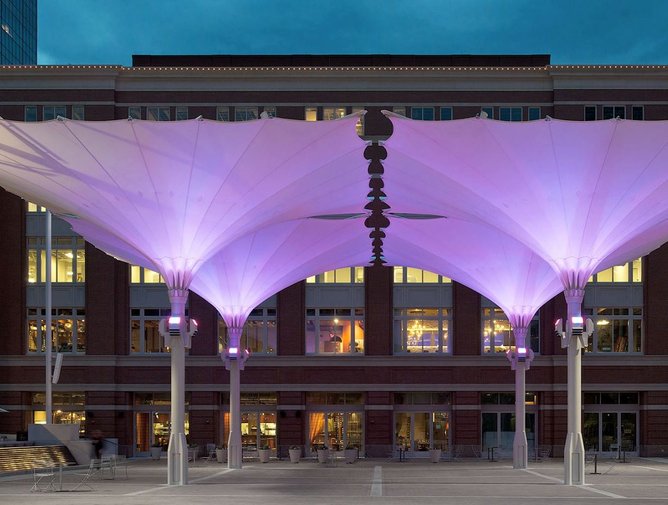The parasol technology pioneered in 2009 to combat the Saudi Arabian sun could help other countries adapt to the growth of unpredictable weather.
In the scorching summers of Saudi Arabia, temperatures soar above 38 degrees celsius even in the shade.
The country, one of the MENA region’s hottest, has recorded temperatures nearing 53 degrees.
Every year, the Hajj pilgrimage draws millions to its sun-drenched expanses. In 2023, 1.83 million Muslims journeyed there, braving the extreme heat which poses serious health risks and has resulted in numerous fatalities.
Given these challenges, creating ample shade has emerged as a vital necessity.
This urgent need led to the German engineering company Liebherr-Werk Ehingen GmbH, a subsidiary of Liebherr Group, undertaking a project for the Saudi government in 2008.
It was tasked with designing giant parasols for Medina, aiming to provide relief from the relentless sun.
Urban areas globally could embrace similar innovations to combat the escalating temperatures induced by climate change.
How convertible parasols can help adapt to climate change
The assignment to develop these lifesaving shades was given to the Saudi Binladin Group, which turned to Liebherr for the structural design.
Leveraging its expertise in crane technology, Liebherr-Werk Ehingen GmbH conceived a prototype that would redefine outdoor comfort in Medina.
Today, Medina is home to 250 towering parasols, each standing 15m tall.
These structures create a vast shaded oasis of 143,000 square metres, significantly reducing the temperature by up to 8 degrees.
Their design features hydraulic cylinders allowing them to adjust to the sun’s intensity, ensuring optimal shade and cooling.
Concealed within decorative columns when not in use, these parasols harmonise with their historic surroundings.

Made from cutting-edge materials, they are robust enough to withstand extreme weather while providing essential UV protection.
The fabric, developed with the help of SEFAR Architecture, offers a blend of durability and aesthetic appeal.
But it’s not just about shade. The parasols also feature built-in water misting systems, offering a refreshing respite to people passing by.
Each of these parasols offers around 800 people protection from the sun.
The future for urban cooling

This concept of convertible shading isn’t confined to Saudi Arabia.
Fort Worth, Texas in the US introduced similar parasols designed by SL Rasch in Sundance Square Plaza in 2013.
These structures not only provide shade but also light up at night, adding beauty and functionality to public spaces.
As climate change makes extreme weather the “new normal,” these innovative parasols represent a blend of functionality and design that could serve as a model for cities worldwide.
In regions threatened by rising temperatures, such as the Global South, Asia and Southern Europe, there is big potential for widespread adoption of cooling technologies.
The collaboration between engineers, architects, and urban planners is more critical than ever. It presents an opportunity to rethink how we create sustainable and liveable cities for the future.



